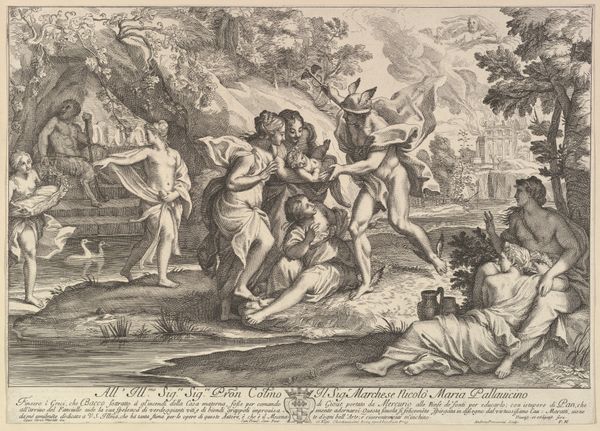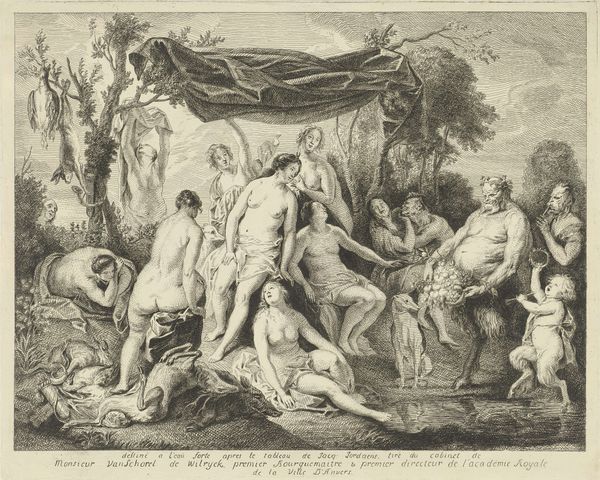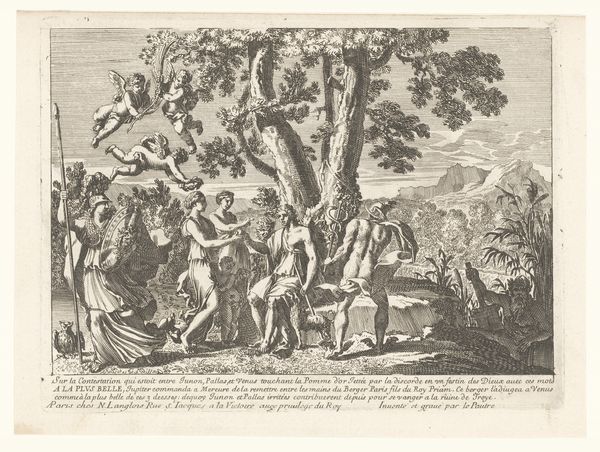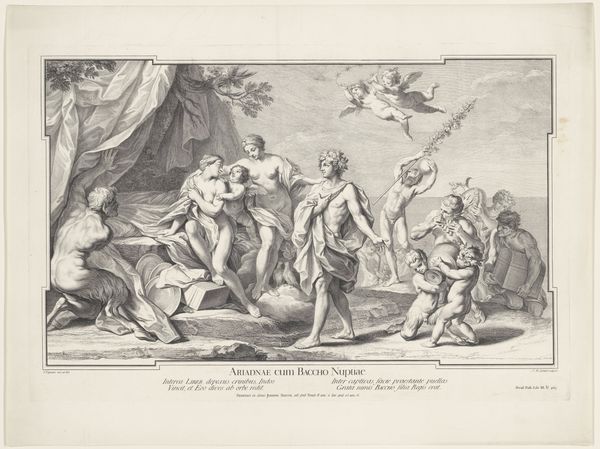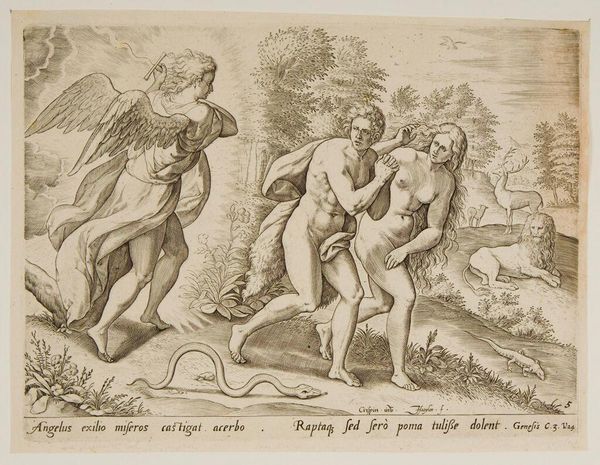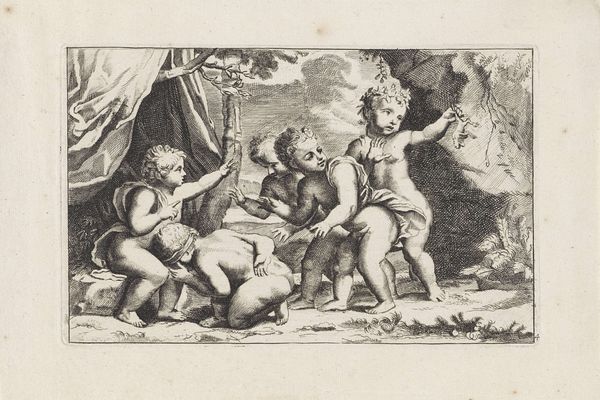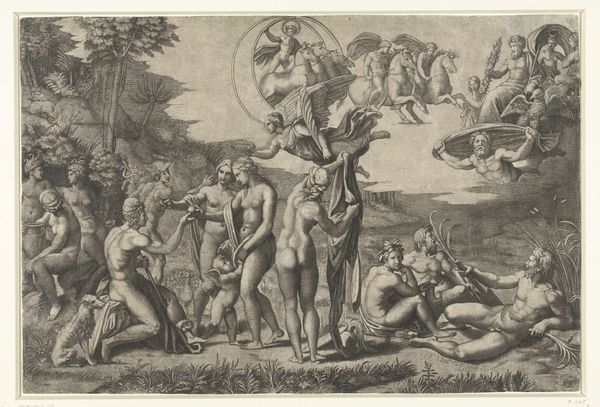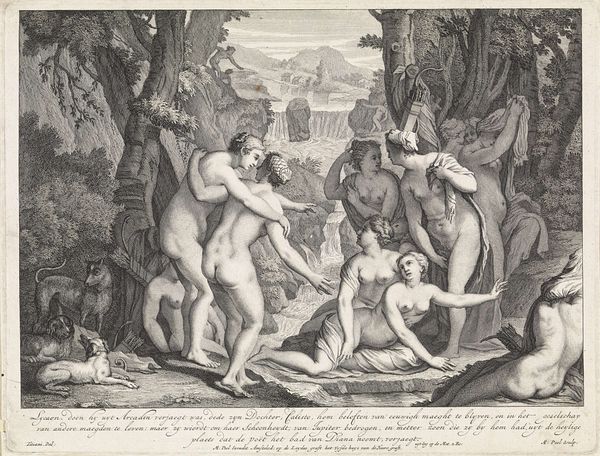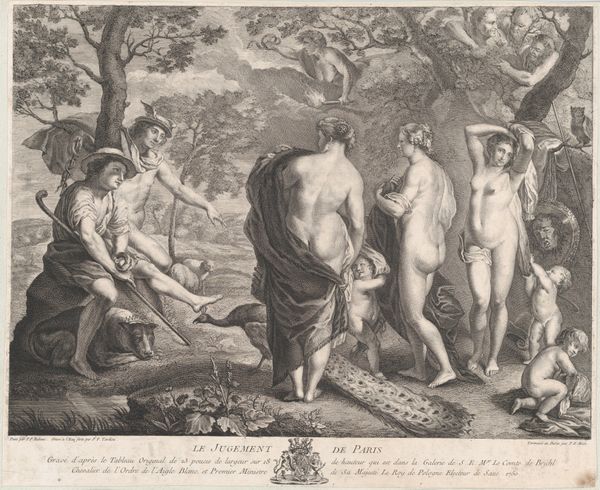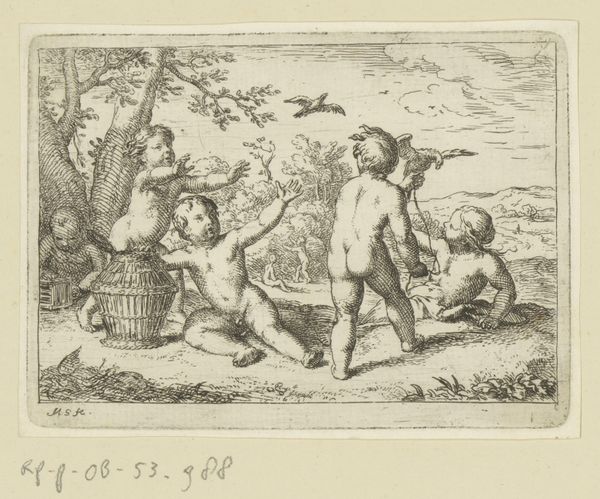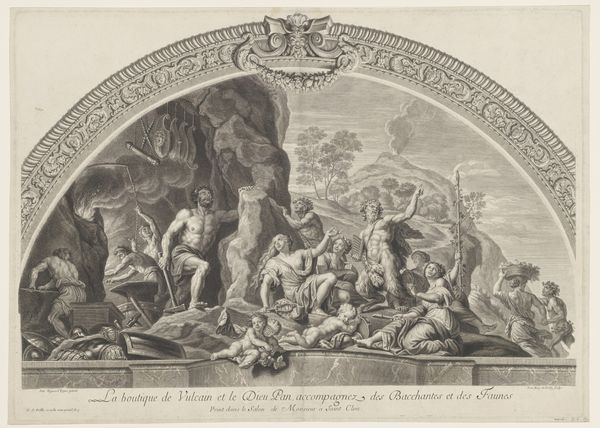
print, etching
#
baroque
#
pen drawing
# print
#
etching
#
landscape
#
figuration
#
genre-painting
#
nude
Dimensions: height 348 mm, width 587 mm
Copyright: Rijks Museum: Open Domain
Gerard de Lairesse made this print, “Dancing Nymphs,” using etching, a process that marries chemistry and craft. The etcher covers a metal plate with a waxy ground, then draws an image, exposing the metal. An acid bath bites into these lines, which are then inked to produce the print. The quality of a print depends on the material properties of the metal used, and on the etcher’s control of time and temperature. Lairesse clearly had these skills in abundance. Look closely, and you’ll see how different densities of line create shadow and volume. The evenness of the printing suggests a practiced hand, carefully wiping the plate to produce a consistent image. Prints like this allowed for the wide distribution of images. They democratized artmaking in a way. It was no longer confined to unique paintings for the wealthy elite, but this was also achieved by instrumentalizing labor. The more prints were made, the lower the value of the artwork was, causing skilled etchers to lower their own prices. The cost of art became the price of labor, and the art itself became devalued. It’s a transformation as relevant today as it was in Lairesse’s time.
Comments
No comments
Be the first to comment and join the conversation on the ultimate creative platform.

